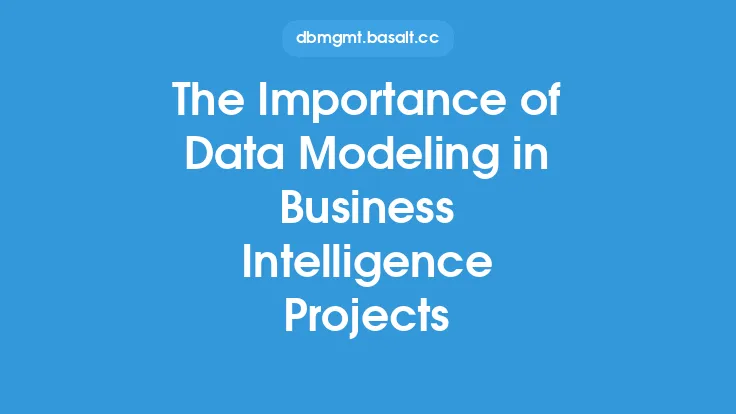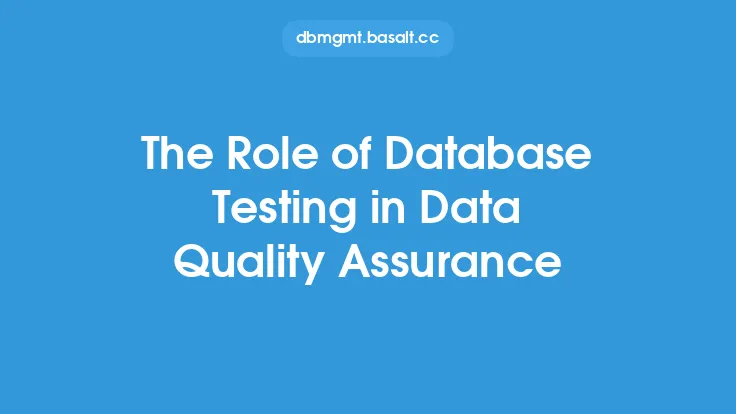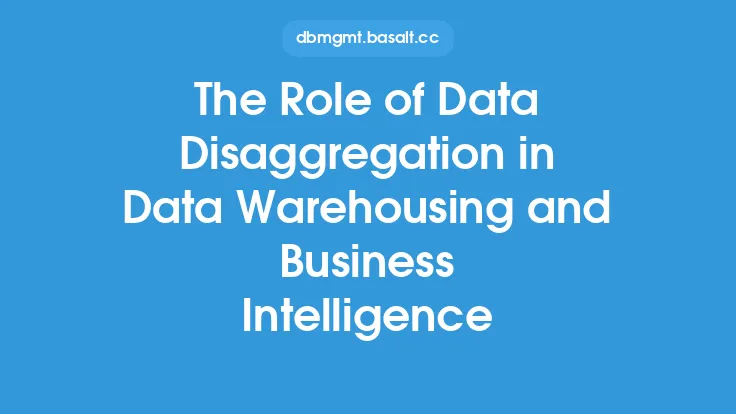When it comes to database implementation, one of the most critical aspects is data migration. This process involves transferring data from one system, format, or storage device to another, and it requires careful planning and execution to ensure success. At the heart of a successful migration project is data mapping, a crucial step that involves creating a detailed map of how data will be transformed and transferred from the source system to the target system. In this article, we will delve into the role of data mapping in successful migration projects, exploring its importance, benefits, and best practices.
Introduction to Data Mapping
Data mapping is the process of creating a detailed, visual representation of how data will be transformed and transferred from the source system to the target system. This involves identifying the data elements, their relationships, and the rules that govern their transformation. Data mapping is essential because it helps to ensure that data is accurately and consistently transferred, reducing the risk of errors, data loss, or corruption. A well-designed data map provides a clear understanding of the data migration process, enabling stakeholders to identify potential issues and develop strategies to mitigate them.
Benefits of Data Mapping
The benefits of data mapping are numerous and significant. Firstly, it enables organizations to ensure data consistency and accuracy, which is critical for business operations and decision-making. Data mapping also helps to reduce the risk of data loss or corruption, which can have serious consequences for businesses. Additionally, data mapping facilitates the identification of data quality issues, enabling organizations to develop strategies to address them. Furthermore, data mapping enables organizations to optimize their data migration process, reducing the time and cost associated with the migration. Finally, data mapping provides a clear understanding of the data migration process, enabling stakeholders to communicate effectively and make informed decisions.
Data Mapping Techniques
There are several data mapping techniques that organizations can use, depending on their specific needs and requirements. One common technique is entity-relationship modeling, which involves creating a visual representation of the relationships between data entities. Another technique is data flow modeling, which involves creating a visual representation of the flow of data between systems. Organizations can also use data mapping tools, such as data mapping software, to create and manage their data maps. These tools provide a range of features, including data profiling, data transformation, and data validation, to support the data mapping process.
Best Practices for Data Mapping
To ensure the success of a data migration project, it is essential to follow best practices for data mapping. Firstly, organizations should establish clear goals and objectives for the data mapping process, ensuring that all stakeholders are aligned and working towards the same outcomes. Secondly, organizations should use a structured approach to data mapping, involving a thorough analysis of the source and target systems, as well as the development of a detailed data map. Thirdly, organizations should use data mapping tools and techniques to support the data mapping process, ensuring that the data map is accurate, complete, and up-to-date. Finally, organizations should test and validate the data map, ensuring that it is correct and functional, before proceeding with the data migration.
Data Mapping and Data Governance
Data mapping is closely related to data governance, which involves the development of policies, procedures, and standards to manage and protect an organization's data assets. Data mapping provides a critical input to data governance, enabling organizations to understand their data assets, identify data quality issues, and develop strategies to address them. Data governance, in turn, provides a framework for data mapping, ensuring that the data mapping process is aligned with the organization's overall data management strategy. By integrating data mapping and data governance, organizations can ensure that their data assets are properly managed and protected, reducing the risk of data-related issues and improving overall business performance.
Common Challenges in Data Mapping
Despite its importance, data mapping can be a challenging and complex process. One common challenge is the complexity of the source and target systems, which can make it difficult to create an accurate and complete data map. Another challenge is the lack of standardization, which can make it difficult to integrate data from different systems and sources. Additionally, data mapping requires significant resources and expertise, which can be a challenge for organizations with limited budgets and personnel. Finally, data mapping is a time-consuming process, which can delay the data migration project and impact overall business operations.
Future of Data Mapping
The future of data mapping is closely tied to the development of new technologies and trends, such as cloud computing, big data, and artificial intelligence. These technologies are creating new opportunities for data mapping, enabling organizations to automate and streamline the data mapping process. Additionally, the use of data mapping tools and techniques is becoming more widespread, enabling organizations to improve the accuracy and efficiency of their data mapping processes. As data continues to play an increasingly important role in business operations and decision-making, the importance of data mapping will only continue to grow, driving the development of new technologies and techniques to support this critical process.
Conclusion
In conclusion, data mapping is a critical component of successful migration projects, enabling organizations to ensure data consistency and accuracy, reduce the risk of data loss or corruption, and optimize their data migration process. By following best practices for data mapping, organizations can ensure that their data migration projects are successful, on-time, and within budget. As the importance of data continues to grow, the role of data mapping will only become more critical, driving the development of new technologies and techniques to support this essential process. Whether you are a seasoned IT professional or just starting out, understanding the role of data mapping in successful migration projects is essential for ensuring the success of your organization's data migration initiatives.





